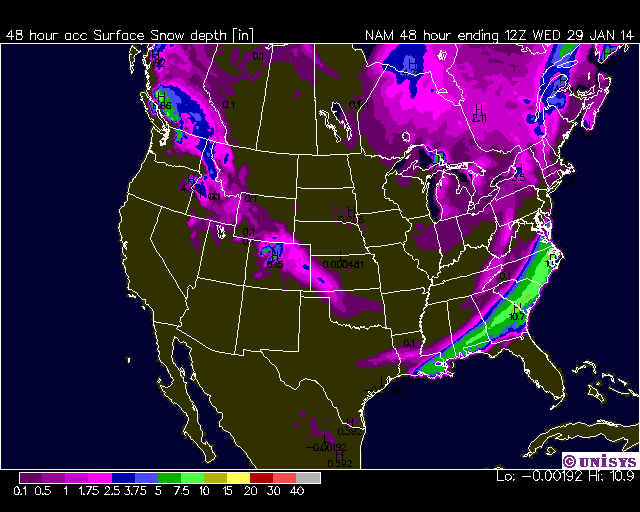Here’s the latest 48 hr total snowfall forecast (from the NAM model) ending Wednesday morning (it assumes all frozen precip. falls as snow…where it’s freezing rain or sleet, the depths will be less):

See our WeatherStreet.com snowstorm forecast page for additional forecast products.

 Home/Blog
Home/Blog



